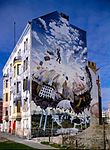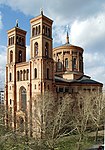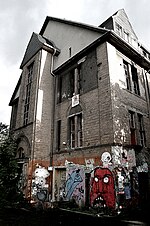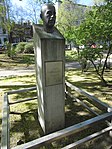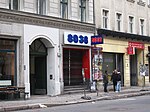Køpi
1990 establishments in GermanyBuildings and structures in MitteHarv and Sfn no-target errorsLegalized squatsSquats in Germany ... and 1 more
Use British English from December 2019

Køpi (also known as Köpi or Koepi) is a housing project (German: Hausprojekt) located at 137 Köpenicker Straße in Mitte, Berlin. It was squatted in 1990 and legalised in 1991 as an autonomous housing project and self-managed social centre. The yard was used as a wagenplatz for people living in vehicles. It is a left-wing project, connected to punks, anarchists and Autonomen. The building has become a symbol for the radical left in Berlin in the same manner as Rozbrat in Poznań or Ungdomshuset in Copenhagen. It has survived several eviction attempts both through political pressure and because the developers have always run out of money.
Excerpt from the Wikipedia article Køpi (License: CC BY-SA 3.0, Authors, Images).Køpi
Köpenicker Straße, Berlin Mitte
Geographical coordinates (GPS) Address External links Nearby Places Show on map
Geographical coordinates (GPS)
| Latitude | Longitude |
|---|---|
| N 52.507777777778 ° | E 13.426111111111 ° |
Address
Køpi
Köpenicker Straße 137
10179 Berlin, Mitte
Germany
Open on Google Maps
